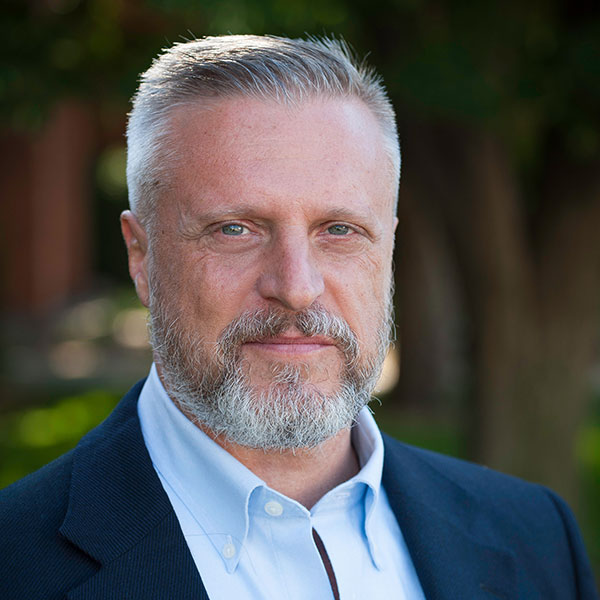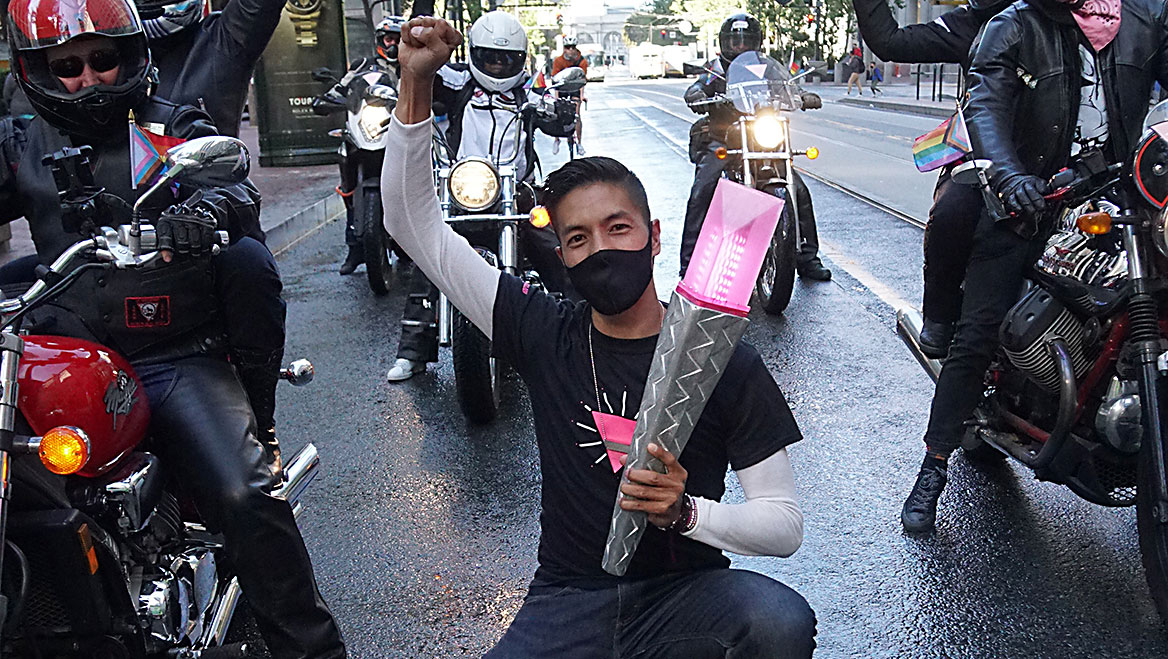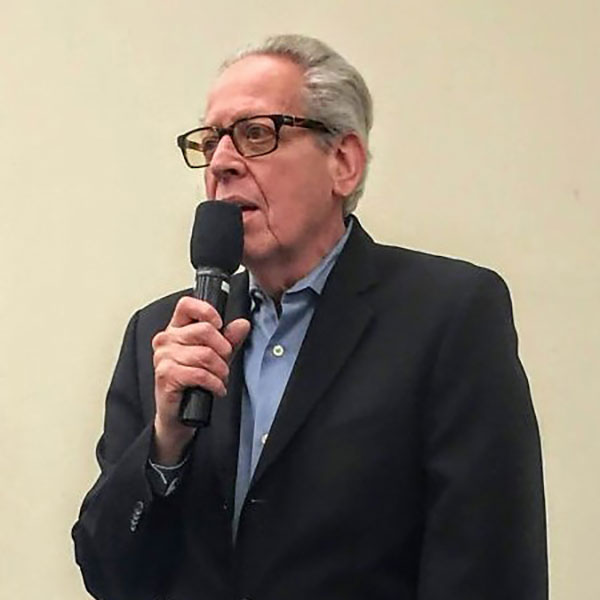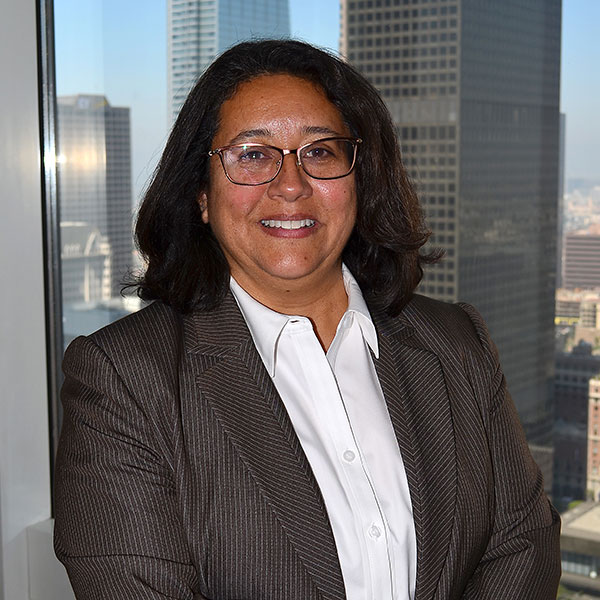June 24, 2021
From embracing gender-inclusive language to creating safe, economically productive places like the world's first transgender cultural district in San Francisco, supporting LGBTQ+ planners and residents is key to fostering equitable workplaces and communities.
With that in mind, Planning magazine convened a roundtable of members of APA's LGBTQ and Planning Division to get their thoughts on LGBTQ+ communities' needs, what the profession can do to help, and how their identities impact their own work as planners.
The conversation has been edited for clarity and length.
PLANNING: How can planning better support LGBTQ+ communities?
SCOTT DVORAK, AICP, New Jersey State Director, Trust for Public Land: Like all communities, LGBTQ+ communities have special and particular needs. The profession, I believe, already supports the idea that all voices need to be at the table and need to be heard, but it needs to make sure to include all those voices from within as well. Inclusivity is not just about listening to and delivering to a community, but about being part of and truly being representative of the community.
MICHAEL LEVINE, Retired, Former Adjunct Professor of Urban Planning at Pace University and Director of the Community Planning Fellowship Program of the Fund for the City of New York: Representation is crucial. The LGBTQ+ community plays a unique role in the wider community in that they understand at a personal level the struggle for social equality that members of minority groups face. Involving LGBTQ+ community members in the planning process ensures those needs are incorporated into project goals. The profession should also ensure that every major planning endeavor includes representatives of the LGBTQ+ community who are "out" and encourage those who are not "out" to do so. One way to accomplish that could be including LGBTQ+ firms in RFPs with special outreach and consideration similar to minority and women-owned businesses. In this way, our contribution to the planning process will be enhanced.

Photo courtesy of Scott Dvorak.

Photo courtesy of Marcia Tobin.
MARCIA TOBIN, AICP, Vice President, Urban Planning for AECOM and Chair of the LGBTQ and Planning Division: Like other marginalized communities and populations, the LGBTQ+ community is so rich and diverse — both the community members themselves and the challenges they face. That diversity is reflected within the LGBTQ+ Division, as well as the other population-based divisions within APA, which cuts across every discipline within planning. Planning can bring the needs of these communities forward and highlight the history and stories that have not been told. We can broaden the perspective and lens through which we see the cultural history of these communities.
MARCEL ACOSTA, Executive Director, National Capital Planning Commission: The untold stories of many Americans, including the experiences and contributions of the LGBTQ+ community, have been consistently underrepresented in our national narrative. I see it firsthand in my work planning for our national capital's monuments, museums, and symbolic public spaces. As planners, we are responsible for finding opportunities to encourage a diversity of representation and a more encompassing story in this nationally symbolic space. Moreover, given the public's renewed focus on diversity and race and gender equity resulting from recent events, planners are in a crucial position to relate these issues to their ongoing work.
PLANNING: What are some issues in LGBTQ+ communities that planning is not current addressing but should?
ROBIN ABAD, Director of Shared Spaces, City and County of San Francisco: Planning can better support LGBTQ+ communities by expanding housing access for our most vulnerable. For our seniors and youth, especially our trans youth of color, stable housing can be the single largest determining factor for so many other outcomes: physical and mental health, gainful and continued employment, and ultimately community engagement and leadership. San Francisco and California are translating this into policy, and that policy has real impactful results. Several years ago, San Francisco opened its first housing facility for LGTBQ seniors. Mayor Breed also established rental subsidies, transitional housing, and navigation services for trans and gender-noncomforming folks.

Robin Abad was the torchbearer for the Pink Torch Procession 2021, a ceremonial procession from Oakland to Twin Peaks in San Francisco marking the start of Pride month in the Bay Area. Photo by Ben Davis.
ROGELIO FLORES, AICP, Associate Director for Citywide Planning, Strategy, and Analysis, DC Office of Planning: In addition to housing, planning should also support spaces, venues, and programs that celebrate LGBTQ+ history and culture, as well as community and healthcare facilities that provide important LGBTQ+ services.
PLANNING: Are there any current or past planning efforts specifically geared toward LGBTQ+ needs that have inspired you or that you're excited by?
MARCIA TOBIN: The Lyon-Martin House in San Francisco became a local landmark in May, with the San Francisco Board of Supervisors voting unanimously for this designation. I am inspired and grateful for the hard work that cultural planners completed to achieve this. This literally puts the pioneering work of LGBTQ and civil rights activists Phyllis Lyon and Del Martin on the map.
SCOTT DVORAK: I am proud of the fact that The Trust for Public Land was a partner in helping the Stonewall Inn become a National Historic Monument. And we have been thinking more about the nature of public space and who feels welcome in it. It isn't enough to just add to a national or state park or create a new city park and assume that everyone has equal access to it or feels comfortable in that space. We have to do better at connecting the community to that space and to ensure that they remain connected by feeling safe to use it and having it be a place where they can express themselves as a community and as individuals.
MICHAEL LEVINE: The Greenwich Village Society for Historic Preservation has created an archive of oral histories of LGBTQ+ planners and preservationists who have contributed to the creation of this unique community. My history is among them.
ROGELIO FLORES: In 2019, colleagues from District of Columbia Office of Planning's Historic Preservation Office completed a Historic Context Statement for Washington's LGBTQ Resources. This document is part of the National Park Service's LGBTQ Heritage Initiative, and is a great resource for understanding the people, places, and spaces that have shaped LGBTQ+ history in DC, including its role as a national platform for LGBTQ+ advocacy and activism.

Photo courtesy of Michael Levine.

Photo courtesy of Rogelio Flores.
ROBIN ABAD: I'm really inspired by efforts to memorialize LGBTQ+ neighborhoods and cultural heritage. There's been a lot of discourse over the last decade or so questioning the continued relevance of cultural enclaves. I reject the notion that we no longer need neighborhoods serving the needs of our rainbow family. San Francisco has no fewer than three such designated neighborhoods: the Transgender Cultural District in the Tenderloin, the Castro LGBTQ Cultural District, and the Leather & LGBTQ Cultural District in South of Market. These places are epicenters for our social histories, where we continue to enact our rituals of communion, and it's important to mark their geographies.
I often think of queer neighborhoods as part of our 'Spiritual Infrastructure' (a term coined by my friend, the artist Ben Davis). I've worked on a couple projects that express LGBTQ+ cultural heritage in physical ways: Harvey Milk Plaza and Illuminating the Pink Triangle. Engaging in those efforts connect me to my ancestors, and also point the way to a future that honors their sacrifice. If others — queer or straight — come away feeling similarly inspired, then we've done it right!
PLANNING: How does your personal identity impact your work as a planner?
KIMBERLY AVILA, AICP ENV SP, Senior Environmental Technical Director and Rail Sector/Transportation Lead for Southern California, ICF International: My personal identity — woman, Latina, or lesbian — is always out front. It affects how I am perceived whether I acknowledge it or not. I want to represent always, and make sure that "other" voices are heard and embraced. Speaking truth to power is a very difficult thing to do. Most recently, I have been so proud of the voices, young voices, at APA that speak this truth with facts and figures and with plans and purpose — I salute you!
MARCEL ACOSTA: Everyone brings their own experiences that help shape their perspective and influence their approach to their work. Being both LGBTQ and an Asian-American has made me more acutely aware of the need to promote broader representation, engagement, and perspective in our planning work.

Photo courtesy of Marcel Acosta.
ROGELIO FLORES: I have had the opportunity to live and work in Boston, Los Angeles, New York City, and Washington, DC, experiencing how these cities bring people from a wide array of backgrounds, cultures, and identities together. This multicity perspective has enabled me to develop a more people-centric approach to city planning, with direct awareness of challenges faced by LGBTQ+ and Latino communities. Additionally, these experiences have compelled me to develop a deep personal and professional appreciation for cities' historical role in attracting LGBTQ+ persons and enabling LGBTQ+ communities to flourish — often by pioneering neighborhood revitalization through a unique infusion of artistic, cultural, and creative energies.
PLANNING: What has it been like for you to be LGBTQ+ in the planning workplace?
SCOTT DVORAK: I am very grateful to have found a career that was comparatively more open to being LGBTQ+ at the time. My life would have been very different if I had been directed into a career that forced me to decide between being open or hiding my true identity in order to do what I loved.
MICHAEL LEVINE: The year after I began my employment, I was at Stonewall during the rebellion and worried that my job would be threatened if anyone knew I was gay – if they knew I was there. To my surprise, my coworkers expressed support and were pleased that my presence at the department brought a welcome addition to the workplace that sought to represent and plan for all segments of the community. I felt so lucky to be there.

Photo courtesy of Kimberly Avila.
KIMBERLY AVILA: In 1995, I decided to move from my somewhat closeted Los Angeles life to San Francisco. In San Francisco, I fully expected to be side by side with my gay brethren socially as well as professionally. I was somewhat disheartened when the "one out of 10 people are gay" rule did not hold true at my office. There were maybe one or three others at my company at any given time. However — and this was a huge benefit — the planning world in San Francisco was very welcoming and full of my gay brethren. At my office, I brought my girlfriend to all company events from the start and was delighted to be welcomed with open arms. I don't know of another business community that would have been so welcoming.
PLANNING: How has the LGBTQ and Planning Division impacted your career?
MARCEL ACOSTA: I've been a member of GALIP (Gays and Lesbians in Planning) and the LGBTQ and Planning Division of APA since 1992. During the early years, GALIP was an informal networking group. While both it and the division, which was officially formed in 1998 — and not without controversy at APA — provided an important social outlet, it was also vital to our community since many LGBTQ planners did not have a support group at the workplace or in their communities. In addition, some of our members were dealing with workplace issues, such as job security, being out at work, and outright discrimination. Membership in the division has also offered invaluable networking opportunities to meet fellow LGBTQ planners.
When we started GALIP in 1992, it would have been impossible to believe that the association would elect visibly out members to the APA leadership. Today, we've seen visibly out LGBTQ planners become senior leaders at their respective workplaces and elected to the APA Board, AICP Commission, and even APA President! There's still much more work to do, and the LGBTQ Division is crucial to sustaining and extending the gains that we've already made in the planning profession.
SCOTT DVORAK: I attended a very early GALIP meeting in Chicago at the invitation of Marcel Acosta when the group was just being formed. Gays and Lesbians in Planning? What's this, I wondered. I hadn't quite finished my thesis yet. I hadn't quite gotten my job at APA yet. But those early meetings while just starting out in my newly chosen career (having left banking and investment advising behind me before graduate school) was extremely supporting and liberating. Being able to be out from the beginning of my career and connecting to other out planners was extremely important and set me on a path over my career that wouldn't have been quite the same and possibly not as fulfilling.
MICHAEL LEVINE: The division made me feel comfortable in coming out to colleagues. We organized tours of gay neighborhoods and sites that were well attended by all members at every national conference. The division gave me great pride that I belong here among thousands of planners as an equal partner in building the future.
ROGELIO FLORES: The LGBTQ and Planning Division of APA has positively impacted my experience in the field. I have made connections across many cities and feel part of a robust community of talented friends who share insights, experiences, and mentorship. This Division complements the other two APA divisions to which I belong: the Latinos and Planning Division, and the Technology Division. The former provides a vital forum for discussion of Latino issues across the U.S., and the latter a venue for surfacing and sharing insights on how digitization is affecting cities and our profession. Together, these three APA Divisions provide a great window into a wide array of ideas, opportunities, and engagement with amazing people.




